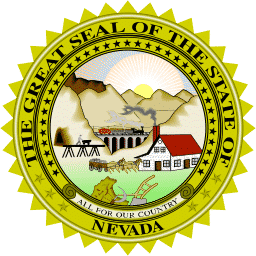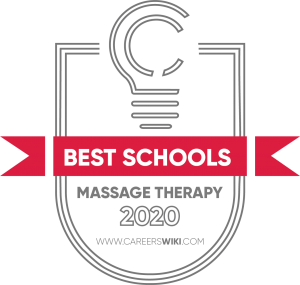…
There are eight massage therapy schools in Nevada, including private institutes and public community colleges.
Most students earn certificates, which takes a year or less. A two-year associate degree is available on one campus. Curricula are a mix of lectures, lab classes, and clinical experiences. The programs qualify graduates to apply for licenses to practice in Nevada.
Employment opportunities are expanding for massage therapists in the Silver State. Authorities expect about 290 job openings every year through 2026. Las Vegas and Henderson are among the 10 U.S. metropolitan areas with the most practitioners.
You might also be interested in viewing our list of top massage therapy schools in the U.S.

This agency regulates the practice of massage therapy, reflexology, and structural integration. It assesses the qualifications of prospective massage therapists, issues licenses, and enforces license-renewal and continuing education requirements.
Another duty is establishing criteria for massage therapy school curricula. The board approves educational institutions that comply, and posts a list of those that fall short. It also adopts standards for state certification of massage establishments.
The board investigates complaints, and disciplines practitioners who engage in illegal or unethical behavior. Massage therapists may face fines, license suspensions, or license revocations.
The governor appoints 10 board members. Among them are six licensed massage therapists, including three from Clark County and two from Washoe County. One member is a licensed reflexologist and another is licensed to practice structural integration. One person represents the public. The final member is a non-voting adviser from Clark County with experience as a Las Vegas police officer.
To become a massage therapist in Nevada, the initial requirement is to be a high school graduate or GED holder. Health and science classes help prepare students for postsecondary education in the field.
It is necessary to enroll in an accredited school with a massage therapy program that the state board has approved. A curriculum must provide 550 or more clock hours of instruction and training. This is to include classes in anatomy and physiology, hygiene and first aid, law and ethics, and massage. There must be a minimum of 25 hours of practice on fellow students or staff members.
Some programs exceed state standards by offering additional courses in massage techniques, business skills, or other subjects. Earning an associate’s degree generally entails taking general education classes.
Graduates are not yet eligible to practice. They need to apply to the state board for licensure, which involves passing the Massage & Bodywork Licensing Examination (MBLEx). The Federation of State Massage Therapy Boards accepts online applications to take the test at a center near a student’s home.
The board mandates that practitioners obtain license renewals every two years. The first time, they must receive 12 hours of continuing education. For subsequent renewals, the state requires 24 hours.
We selected the schools below based on the programs that they offer, accreditation, student population, graduation rate and reputation.
View our Ranking Methodology to learn more about how we rank schools.

NA
99
This private institute is in the Village Square Shopping Center. There are full- and part-time program options, and weekend classes are available. Classes are taught in English and Spanish.
Students can earn certificates in as few as eight months. The 610-clock-hour program covers body mobilization techniques, PNF stretching, trigger point therapy, cupping therapy, acupressure, reflexology, manual lymphatic drainage, kinesiology, practice management, and business building. Classes also teach massage modalities such as Swedish, deep tissue, chair, sports, hot stone, and Oriental.
The school boasts a “continuously updated curriculum to stay on point with industry trends.” It provides lifelong job-placement assistance.
71%
165
This campus is one of MIC’s seven locations in the western United States. The privately operated school has a student-to-teacher ratio of 10:1.
The massage therapy certificate program involves 760 clock hours, including 364 hours of lectures, 276 hours of labs, and 120 hours in an externship. In addition to state-required coursework, students take Professional Development, Strategies for Success, Swedish Massage Basics, Sports Massage, Shiatsu, Passive Joint Mobilization, Deep Tissue Massage, Prenatal and Pediatric Massage, Business Management, Acupressure, Chair Massage, Reflexology, and Aromatherapy & Hydrotherapy.
Students administer various types of massage to public clients in the school’s Salon & Spas.
62%
243
A chain of 12 private career schools in seven Western states, Carrington offers a 755-clock-hour certificate program that takes about nine months to complete.
The curriculum includes 330 hours of lectures, 300 hours of labs, and 125 hours of clinics. Students learn Swedish massage, sports massage, deep tissue applications, Shiatsu, chair massage, dry room spa techniques, and a variety of site-specific treatments. Other classes teach business concerns, personal care, communication skills, practice management, and success skills.
Graduates are eligible to pursue a 540-hour associate in applied science degree in health studies. The program, which is available online, lasts 42 weeks.
74%
229
This privately owned network of massage therapy and skin care schools offers a certificate program that the renowned Commission on Massage Therapy Accreditation recognizes.
Students attend classes for 32 weeks full time or 47 weeks part time. Courses cover a “spectrum of therapeutic methods.” Day and evening class schedules are available. Cortiva also has a massage bodyworker/Zen practitioner certificate program.
Students are automatically members of the national Associated Bodywork & Massage Professionals, which provides liability insurance. All faculty members are practicing specialists. The program provides hands-on training in a student clinic and during internships.
71%
294
Located in Las Vegas, NCI is owned by the Southwest College of Medical and Dental Assistants and Practical Nurses Inc. It was established in 1946 in California, and was formerly known as Glendale Career College.
The massage therapy certificate program features 34 semester credits that take 36 weeks to earn. The curriculum covers all state-required subjects. Students learn deep tissue massage, trigger point therapy, aromatherapy, hydrotherapy, energy based bodywork, reflexology, and alternative therapies.
The school provides “refresher assistance” classes for its graduates, as well as seminars concerning new developments and procedures in massage therapy.
69%
1067
This private institution in Las Vegas was previously known as the Northwest Massage School. Students can earn certificates in as few as 10 months. Day and evening class schedules are available.
The 750-clock-hour curriculum entails 405 hours of classroom lectures, 195 hours of lab work, and 150 hours in an internship. Students learn Swedish, deep tissue, medical, sports, chair, medical, and special needs massage methods. Other classes teach spa therapies, Shiatsu, advanced kinesiology, and business and marketing practices.
A student clinic affords opportunities for practical experience. The school touts a 100 percent pass rate for graduates on the licensing exam.
9%
34169
This community college is the state’s largest public postsecondary school, with career programs in dozens of professions. Massage therapy students attend classes on the campus in Henderson. There are day and evening class schedules.
The certificate curriculum provides training in massage techniques such as Swedish, deep tissue, sports, pregnancy, and infant. Classes also teach Shiatsu, reflexology, manual lymph drainage, trigger point therapy, hydrotherapy, myofascial release, and aromatherapy. Program participants practice their skills on the public in a student clinic.
The school has an “open-door policy of admitting high school graduates and non-graduates.” Incoming students must take a placement test.
30%
10861
This public school offers a certificate and an associate in applied science degree.
Students complete the certificate program’s 44.5 credits in three semesters. They learn Oriental medicine, reflexology, aromatherapy, stretching and muscle energy techniques, chair massage, Reiki, deep tissue and neuromuscular therapy, sports and athletic massage, hot stone massage, myofascial release, osteo symmetry, prenatal and geriatric massage, and trigger point therapy. There are also general education and business classes.
The 60-unit AAS program adds Fundamentals of Entrepreneurship, Financing Your Small Business Venture, Marketing for Small Business, and Entrepreneurship and Business Plan Development. A kinesiology class is also required.
$10.2
$21,200
16%
The typical practitioner here brings in about $21,200 annually or around $10.20 hourly–substantially less than the national median of over $41,400 a year or about $20 per hour.
Nevada massage therapists among the highest 10 percent make more than $53,000 or about $25.50, considerably below the U.S. average of approximately $78,300 or $37.65. Those in the lowest 10 percent receive more than $16,800 or over $8 in Nevada; and in excess of $21,300 or about $10.25 nationwide.
This state housed 2,320 massage therapists in 2016. The U.S. Bureau of Labor Statistics forecasts an improvement to 2,680 positions by 2026. That 16 percent rate of growth would be slower than the 26 percent the BLS projects across the country.
Sources: U.S. Bureau of Labor Statistics, CareerOneStop

LIMITED TIME DEAL